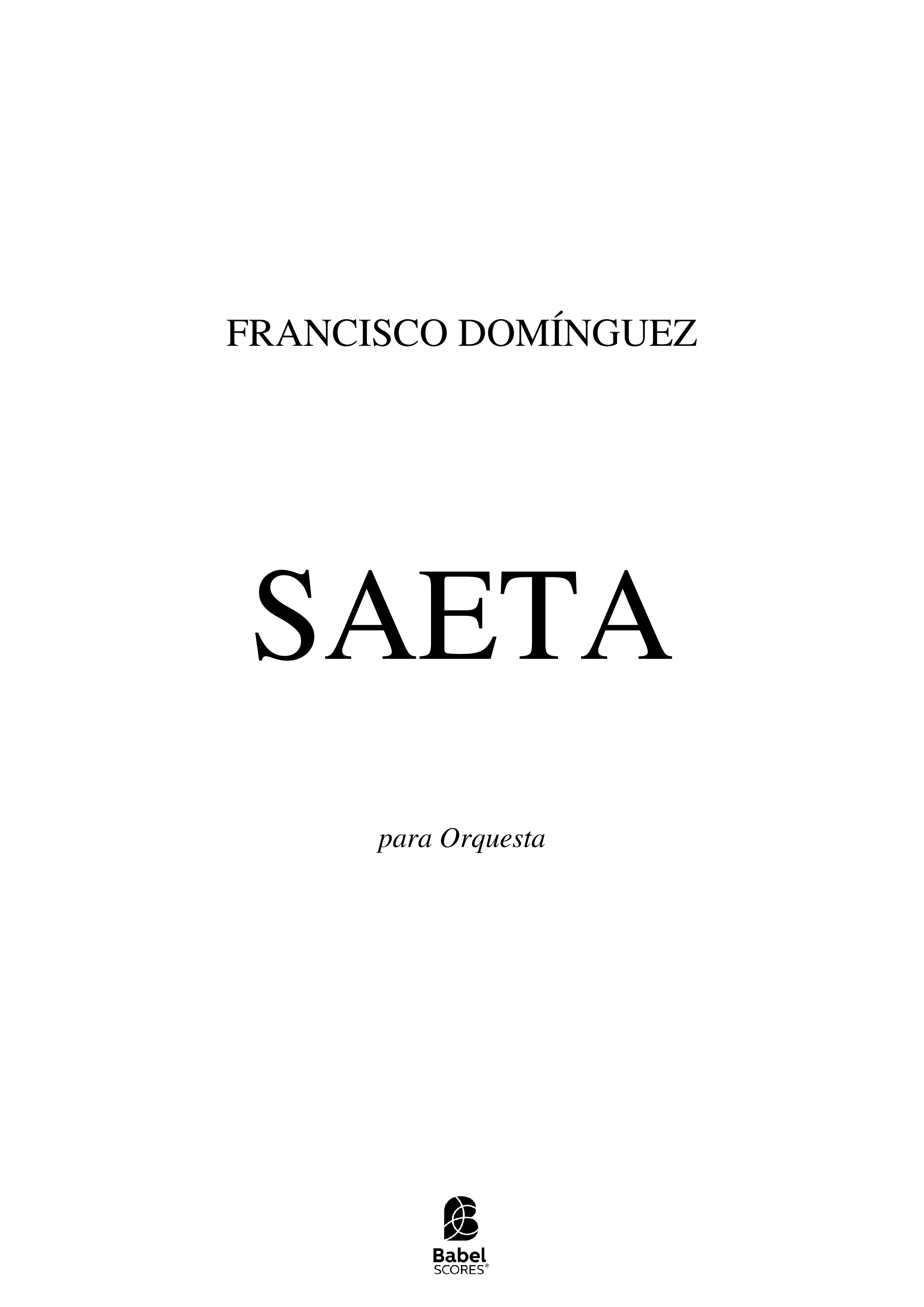SAETA
based on a "flamenco saeta"
17,51 €
Versión impresa (+21,40 € impresión y envío). Colissimo7-14 days aprox.
Versión digital (+0,00 €) para descarga
Al comprar una partitura, usted puede contactar al compositor aquí mismo!
Especificaciones
Region
Europe
Estimated Duration
11 - 15min
Date
2019
ISMN : 979-0-2325-4233-1
Descripción The saeta is a form of traditional song performed mainly in the Easter processions of central and southern Spain. It is characterized by the absence of instrumental accompaniment and for presenting many mélismes and melodic spins.
Going from the a cappella voice to the orchestra is, in fact, a work without an exit and without a definitive solution, since it is difficult to emulate a voice in its rawness and nakedness with an instrument as artificial as the orchestra is. That is why in my Saeta, instead of evoking singing, I have tried to resignify it, although without completely forgetting the original.
To make this work of some computer tools that have allowed me to observe various arrows from the inside and build models for the incorporation of these in my work. One of the things that most caught my attention in those observations is the variability of the heights in the singing, since a priori the saetas are constructed from a reduced number of tones. However, in practice there are multiple deviations that give the singing a color so characteristic and sometimes so close to contemporary music.
The work passes as a continuum without evident breaks in which while some materials are decaying, others always emerge around the song of the saeta. Throughout the work there is a progressive transformation from the horizontal chant to a more rhythmic and vertical chant, where however never comes to lose the melismatic character of it.
It was never my intention in this work to "orchestrate" an arrow, however, from this point onwards it has provided me with a vast amount of musical resources thanks to which I have been able to travel to places that I would certainly not have traveled otherwise. Moreover, the fact that music is such an abstract medium has repeatedly led me to look for external references which, although in most cases not clearly perceived in the final result, are nevertheless very valuable to me and guide me during the composition process.
Add to list
- Login to create your own lists
Going from the a cappella voice to the orchestra is, in fact, a work without an exit and without a definitive solution, since it is difficult to emulate a voice in its rawness and nakedness with an instrument as artificial as the orchestra is. That is why in my Saeta, instead of evoking singing, I have tried to resignify it, although without completely forgetting the original.
To make this work of some computer tools that have allowed me to observe various arrows from the inside and build models for the incorporation of these in my work. One of the things that most caught my attention in those observations is the variability of the heights in the singing, since a priori the saetas are constructed from a reduced number of tones. However, in practice there are multiple deviations that give the singing a color so characteristic and sometimes so close to contemporary music.
The work passes as a continuum without evident breaks in which while some materials are decaying, others always emerge around the song of the saeta. Throughout the work there is a progressive transformation from the horizontal chant to a more rhythmic and vertical chant, where however never comes to lose the melismatic character of it.
It was never my intention in this work to "orchestrate" an arrow, however, from this point onwards it has provided me with a vast amount of musical resources thanks to which I have been able to travel to places that I would certainly not have traveled otherwise. Moreover, the fact that music is such an abstract medium has repeatedly led me to look for external references which, although in most cases not clearly perceived in the final result, are nevertheless very valuable to me and guide me during the composition process.
Instrumentation
Flute|Piccolo|Oboe|Oboe (2)|Clarinet|Clarinet (2)|Bassoon|Contrabassoon|Trumpet|Trumpet (2)|Horn (French Horn)|Percussions|Violin|Violin (2)|Viola |Cello|Double bass|Horn (French Horn) (2)
Score Details
Format - A3 / Tabloid
Pages - 88
Pages - 88
Piezas similares



